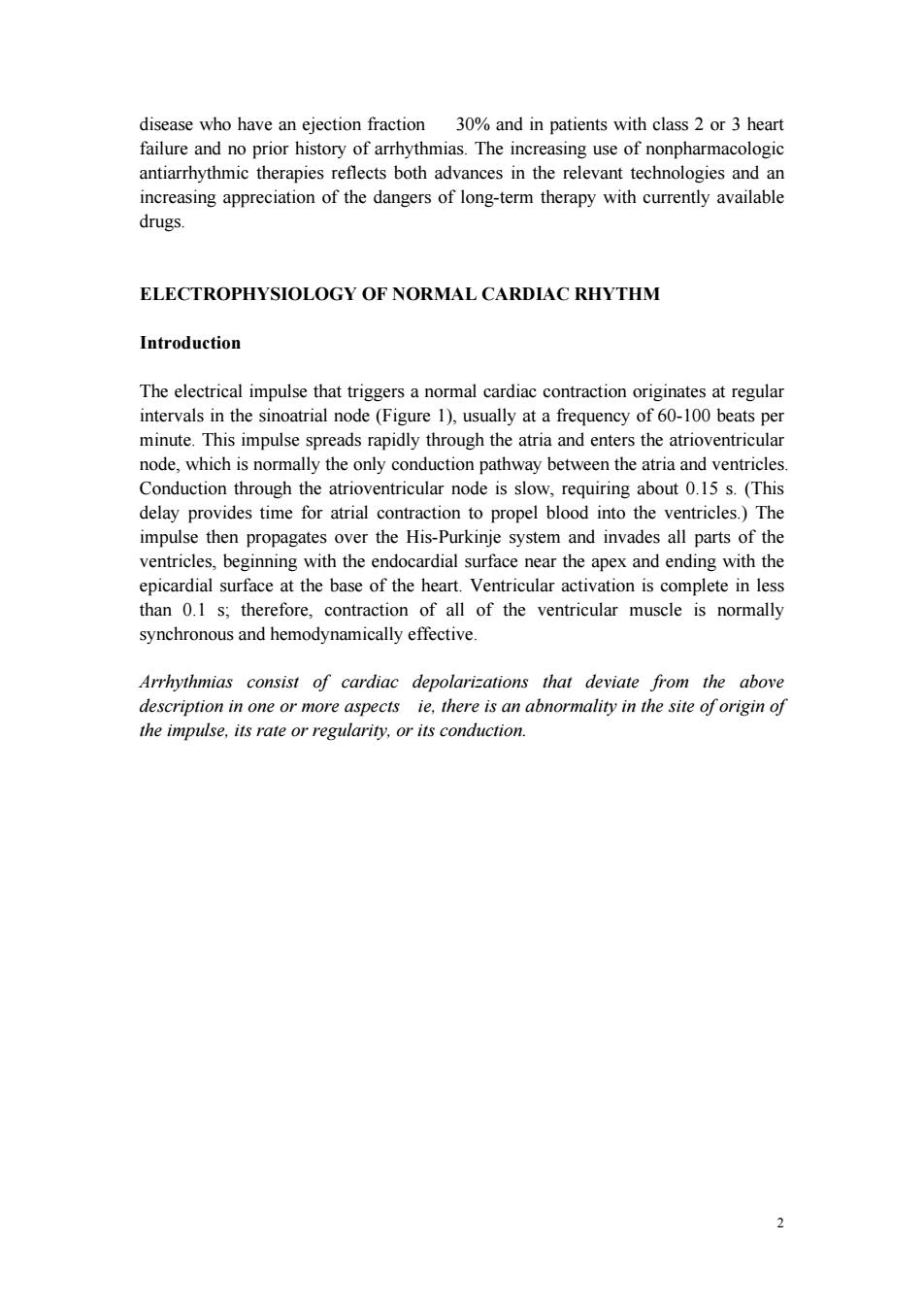正在加载图片...

disease who have an ejection fraction 30%and in patients with class 2 or 3 heart failure and no prior history of arrhythmias.The increasing use of nonpharmacologic antiarrhythmic therapies reflects both advances in the relevant technologies and an increasing appreciation of the dangers of long-term therapy with currently available drugs. ELECTROPHYSIOLOGY OF NORMAL CARDIAC RHYTHM Introduction The electrical impulse that triggers a normal cardiac contraction originates at regular intervals in the sinoatrial node(Figure 1),usually at a frequency of 60-100 beats per minute.This impulse spreads rapidly through the atria and enters the atrioventricular node,which is normally the only conduction pathway between the atria and ventricles. Conduction through the atrioventricular node is slow,requiring about 0.15 s.(This delay provides time for atrial contraction to propel blood into the ventricles.)The impulse then propagates over the His-Purkinje system and invades all parts of the ventricles,beginning with the endocardial surface near the apex and ending with the epicardial surface at the base of the heart.Ventricular activation is complete in less than 0.1 s;therefore,contraction of all of the ventricular muscle is normally synchronous and hemodynamically effective. Arrhythmias consist of cardiac depolarizations that deviate from the above description in one or more aspects ie,there is an abnormality in the site oforigin of the impulse,its rate or regularity,or its conduction. 22 disease who have an ejection fraction 30% and in patients with class 2 or 3 heart failure and no prior history of arrhythmias. The increasing use of nonpharmacologic antiarrhythmic therapies reflects both advances in the relevant technologies and an increasing appreciation of the dangers of long-term therapy with currently available drugs. ELECTROPHYSIOLOGY OF NORMAL CARDIAC RHYTHM Introduction The electrical impulse that triggers a normal cardiac contraction originates at regular intervals in the sinoatrial node (Figure 1), usually at a frequency of 60-100 beats per minute. This impulse spreads rapidly through the atria and enters the atrioventricular node, which is normally the only conduction pathway between the atria and ventricles. Conduction through the atrioventricular node is slow, requiring about 0.15 s. (This delay provides time for atrial contraction to propel blood into the ventricles.) The impulse then propagates over the His-Purkinje system and invades all parts of the ventricles, beginning with the endocardial surface near the apex and ending with the epicardial surface at the base of the heart. Ventricular activation is complete in less than 0.1 s; therefore, contraction of all of the ventricular muscle is normally synchronous and hemodynamically effective. Arrhythmias consist of cardiac depolarizations that deviate from the above description in one or more aspects ie, there is an abnormality in the site of origin of the impulse, its rate or regularity, or its conduction